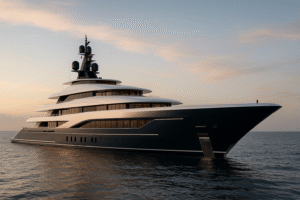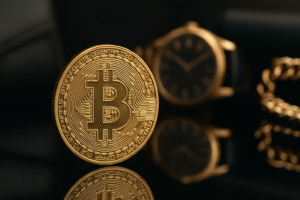Luxury is no longer just about craftsmanship and exclusivity; it is now intertwined with cutting-edge technology, environmental consciousness, and a new focus on individual experience. As consumers evolve, so too must the world of luxury. The future promises a blend of artificial intelligence, hyper-personalization, and virtual realms, reshaping how we perceive and indulge in high-end goods and experiences. Here’s a glimpse into what luxury will look like tomorrow.
1. AI-Driven Luxury: Redefining Personalization
Artificial intelligence is rapidly becoming a cornerstone of luxury brands’ strategies, offering unprecedented levels of personalization. Future luxury shopping experiences will go beyond just tailoring products—they’ll be deeply intuitive, anticipating consumer needs before they arise. Imagine walking into a flagship Gucci store, where AI-driven assistants instantly recognize your preferences, past purchases, and even your mood, offering bespoke product recommendations based on this data.
More than just suggesting products, AI will become the invisible hand in crafting the luxury customer journey. Think of a future where luxury skincare brands like La Mer use AI to analyze your skin type and climate data to create personalized skincare regimens. Or where your next Ferrari is not just custom-built but continuously updated with AI-enhanced performance insights based on how you drive, transforming luxury from static possession to an adaptive, dynamic experience.
2. The Metaverse and Digital Craftsmanship: Virtual Fashion Takes Center Stage
In the next decade, luxury will no longer be confined to the physical world. The metaverse is already influencing the industry, with luxury brands embracing virtual worlds and digital craftsmanship. Balenciaga, Burberry, and Dolce & Gabbana have all experimented with digital collections, blending haute couture with the rise of the virtual fashion world.
The future of luxury in the metaverse will go beyond selling virtual clothing. Brands will create immersive, digital-first experiences where consumers can purchase and display exclusive digital accessories for their avatars. Think virtual Rolex watches, limited-edition Hermès handbags, or custom outfits designed for digital personas—all made accessible in a global, online space. These digital items will be authenticated via blockchain technology, ensuring rarity and value, making digital assets just as valuable as physical ones.
3. Sustainability as a Status Symbol: Luxury’s Green Future
As eco-conscious consumers demand more responsibility from brands, sustainability will become the ultimate luxury. High-end brands will not only have to produce quality products but do so with minimal environmental impact, using ethically sourced materials and sustainable processes. The future will see luxury brands moving beyond sustainability promises to fully integrating environmental responsibility into their DNA.
Luxury conglomerates like Kering, which owns Gucci and Saint Laurent, are already investing in innovative materials such as vegan leather and biodegradable packaging. Expect more collaborations between luxury brands and tech companies developing sustainable alternatives. Imagine future collaborations where Chanel uses carbon-neutral factories or Louis Vuitton implements fully closed-loop recycling systems, where old products are returned, repurposed, and reintroduced into new collections.
Moreover, limited-edition releases and capsule collections will focus on minimal production waste, and customers will increasingly seek out brands that reflect their values. Owning sustainable luxury will become a marker of sophistication, where eco-friendly craftsmanship is as prized as the brand name itself.
4. Immersive Shopping Experiences: Blurring the Digital and Physical
As digital and physical worlds converge, shopping for luxury goods will become a fully immersive experience. The future of retail will feature virtual reality (VR) showrooms, augmented reality (AR) try-ons, and interactive in-store displays. Chanel and Dior may no longer need brick-and-mortar stores as the primary touchpoints for consumers. Instead, virtual showrooms accessible from anywhere in the world will allow customers to “try on” new collections, with VR providing a near-real experience of fabrics, textures, and designs.
Augmented reality could transform luxury travel as well. Imagine booking a stay at The Ritz-Carlton and experiencing an AR tour of your suite, exploring every detail before arrival. This kind of future-forward luxury will take the mystery out of high-end purchases and experiences, giving consumers the confidence to invest in big-ticket items from anywhere.
5. Collaborations Between High Fashion and Tech Giants
The boundaries between technology and luxury are fading fast, with collaborations between luxury fashion houses and tech giants becoming the new frontier. In the future, brands like Apple may team up with Hermès to develop wearable tech that combines state-of-the-art innovation with timeless design, creating products that blend both fashion and function.
More than just tech-enabled watches or clothing, these partnerships could usher in new, interactive luxury experiences. Imagine a Tesla x Louis Vuitton collaboration where cars are not just electric and eco-friendly but fitted with customized leather interiors and features designed by one of the most iconic fashion brands in the world. Similarly, Prada could collaborate with Google to create AI-powered, stylish eyewear that keeps users connected while maintaining a high-end aesthetic.
These tech-luxury collaborations will not just focus on products but also on enhanced customer service, offering bespoke solutions that can cater to the individual needs of luxury buyers, setting a new standard for exclusivity.





